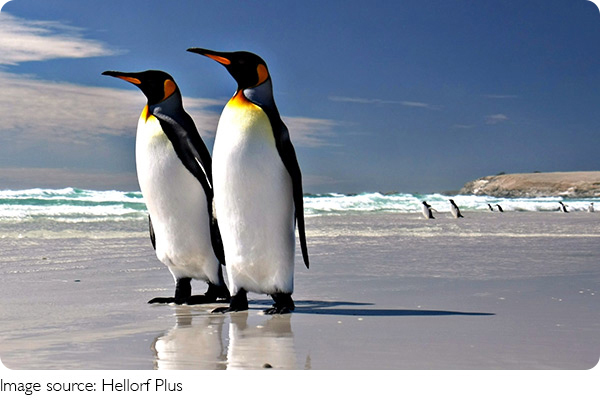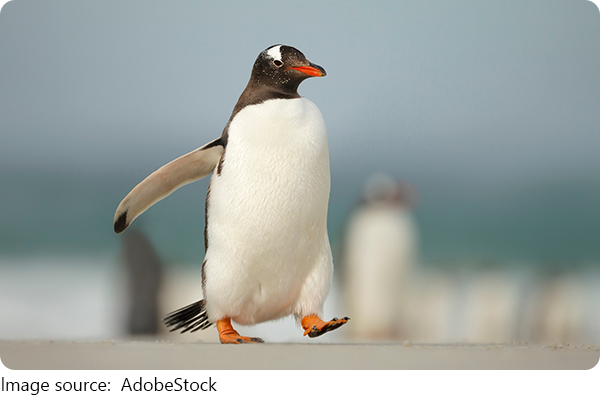Penguins on Sunny Shores

Penguins are typically associated with icy tundras and the freezing poles. However, a surprising few have made their homes in much warmer climates!
Believe it or not, there are penguins living near the equator, basking in the sun, just like most of us during the summer!
The most famous among them is the Galapagos Penguin, who thrives in the tropical heat of the Galapagos Islands. So how did they get there, and how do they survive? Let’s take a fun dive into the curious case of these sun-seeking waddlers.
From Icebergs to Tropical Shores
When most people think of penguins, they envision tuxedoed birds sliding across the ice in Antarctica. But did you know that penguins can be found as far north as the Galapagos Islands? Located just a few degrees south of the equator, these islands offer a drastically different habitat compared to their cold-weather cousins. The journey of how penguins got here is a long one, likely involving migration patterns over millions of years. It’s a bit like a bird deciding to swap out its snow boots for flip-flops – all thanks to natural evolution and the penguins’ ability to adapt to various climates.
The Heat Survival Strategy
Surviving in the heat of the Galapagos isn’t an easy task for these little penguins. Their natural habitat calls for a cooler environment, so they’ve had to come up with some interesting strategies to keep cool. The Galapagos Penguin, for example, is smaller than most other penguins. A smaller size means less surface area, which helps to conserve energy and retain heat more efficiently.
Galapagos Penguin facts: the world's hottest penguins | Animal Fact Files
Animal Fact Files
They’ve also adapted by growing fewer feathers and even developing patches of bare skin, which help dissipate heat directly into the cool ocean breeze. In a move that might remind you of a human on a hot day, these penguins can often be seen lying on their stomachs or flapping their flippers to increase air circulation. Yes, penguins have mastered the art of "flipping the bird" in the most literal way possible!
Tropical Penguins: The Opportunists
Unlike the strict breeding schedules of their polar relatives, Galapagos Penguins have become opportunists. Their breeding depends not on seasons but on the temperature of the ocean waters. The penguins time their nesting to coincide with nutrient-rich waters, brought about by colder ocean currents. This unpredictability means that their reproduction cycle isn’t set in stone - much like waiting for the perfect wave to surf, only it’s fish they’re after.
Facing Threats in Paradise
Life in the Galapagos is certainly far from simple for these penguins. Despite their remarkable adaptability, the Galapagos Penguins are still an endangered species. With only about 1,200 individuals remaining, they face threats like invasive species and, of course, human disturbances. What’s more alarming is the impact of climate change, which could potentially disrupt their already unpredictable food supply.
El Niño events, where ocean temperatures rise significantly, have historically led to sharp declines in the penguin population. In fact, during the 1980s and 1990s, these events led to massive losses of up to 77% of the population. So, while these penguins seem like they’re living the dream on sun-kissed shores, they’re also living on the edge of survival.
Conservation Efforts: A Glimmer of Hope
Fortunately, efforts are underway to protect these quirky birds. The Galapagos Penguins are protected within the Galapagos National Park, where researchers and conservationists are working hard to monitor their population. Through programs that track their movements and breeding cycles, there’s hope for a future where these penguins continue to thrive, despite the odds. However, the work isn’t over. Climate change remains a huge concern, and without continued conservation efforts, the future of these unique penguins could be at risk.

Next time you’re lounging in the sun, think of the Galapagos Penguins flapping around to cool off in their tropical paradise. If you’re planning to visit the Galapagos or want to contribute to conservation efforts, consider supporting local initiatives that aim to protect these birds. Remember, every little action counts in preserving the delicate balance of our world’s ecosystems.

 · Animal Team
· Animal Team